Chugach State Park
- January 23, 2024
- 0 comment
Explore Chugach State Park’s stunning Alaskan wilderness, offering hiking, wildlife, and breathtaking scenic beauty. Located in the heart of Alaska’s rugged wilderness, Chugach State Park stands as a monumental testament to nature’s grandeur. Spanning approximately 495,000 acres, this park, located just east of Anchorage, is one of the largest state parks in the United States. A mosaic of deep forests, towering mountains, and serene lakes, Chugach is not just a park but a gateway to adventure and tranquility.
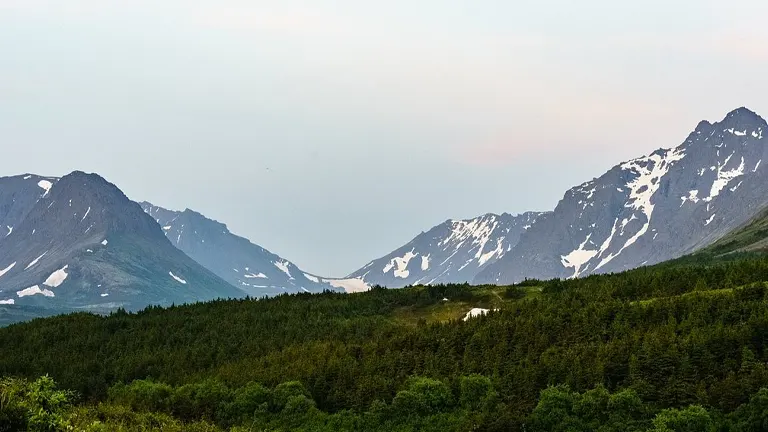
From its most climbed peak, Flattop Mountain, to the stunning blue waters of Eklutna Lake, the park offers a plethora of activities for outdoor enthusiasts. Whether you’re seeking a peaceful hike through verdant trails or an adrenaline-filled mountain climb, Chugach State Park promises an unforgettable Alaskan experience.
Characterizing Features of Chugach State Park
- Immense Size and Diverse Landscapes Chugach State Park is a colossal natural area, covering approximately 495,000 acres. It’s one of the largest state parks in the United States. This vastness encompasses a remarkable range of landscapes, from rugged mountain peaks like the iconic Flattop Mountain to serene lakes such as Eklutna Lake. The park also features extensive ocean shorelines, making it a dynamic mix of ecosystems.
- Proximity to Urban Anchorage Located just east of Anchorage, Chugach State Park offers a unique blend of wilderness and accessibility. This proximity to Alaska’s largest city allows residents and visitors to easily explore its natural wonders. It serves as a quick, convenient retreat into nature, offering an escape from the hustle and bustle of city life while still being within easy reach.
- Rich Wildlife and Plant Life The park is a sanctuary for diverse wildlife, hosting species such as moose, brown and black bears, and Dall sheep. It’s a fantastic location for wildlife watching, offering opportunities to observe these animals in their natural habitat. The plant life is equally diverse, with ecosystems ranging from coastal rainforests to alpine tundra. The flora includes towering white spruce, paper birch, and the delicate alpine forget-me-nots, Alaska’s state flower.
- Recreational Opportunities With over 280 miles of trails, Chugach State Park caters to outdoor enthusiasts of all kinds. These trails are ideal for hiking, mountain biking, and skiing, depending on the season. The park’s varied landscape provides numerous opportunities for outdoor activities throughout the year, from peaceful hikes to challenging mountain climbs, as well as winter sports like cross-country skiing and snowshoeing.
- Historical and Cultural Significance The park is named after the indigenous Chugach people, highlighting its cultural and historical importance. Established in 1970, Chugach State Park preserves not only the natural landscape but also a part of Alaska’s cultural heritage. It serves as a living reminder of the state’s rich history and the connection between its people and the land.
History of Chugach State Park
Chugach State Park, established on August 6, 1970, by Alaska Governor Keith Miller, is steeped in a rich history that intertwines the natural landscape with human interaction. The park was created with a vision to provide recreational opportunities, protect the scenic beauty of the Chugach Mountains, and ensure the safety of the water supply for Anchorage. This legislative act was a response to the growing need for protected natural spaces as Anchorage expanded. The park’s establishment marked a significant commitment to preserving Alaska’s stunning wilderness while balancing the recreational needs of its increasing population. The park’s name itself pays homage to the Chugach, the indigenous people of the upper Cook Inlet region, emphasizing its deep cultural roots in the area.

Chugach State Park has evolved to become the third-largest state park in the United States. It’s a testament to Alaska’s dedication to conserving vast natural landscapes. The park’s diverse areas, each with unique attractions and facilities, have been carefully managed by Alaska State Parks. Over the years, it has grown to include a mix of geographically disparate areas, from the mountainous terrains near Anchorage to the more remote regions like the Eklutna Lake area. Despite its size and varied landscapes, parts of the park like Flattop Mountain have become iconic destinations, showcasing the perfect blend of natural splendor and accessibility.
Unique Ecosystem of Chugach State Park
Chugach State Park is an ecological marvel, showcasing a stunning diversity of habitats and species. This vast park encompasses rainforest-like coastal areas, transitioning to rugged alpine tundra at higher elevations, each zone supporting a rich variety of life. Its lower forests are dominated by towering white spruce and paper birch trees, while the higher, harsher terrains nurture resilient species like the delicate alpine forget-me-not, Alaska’s state flower.
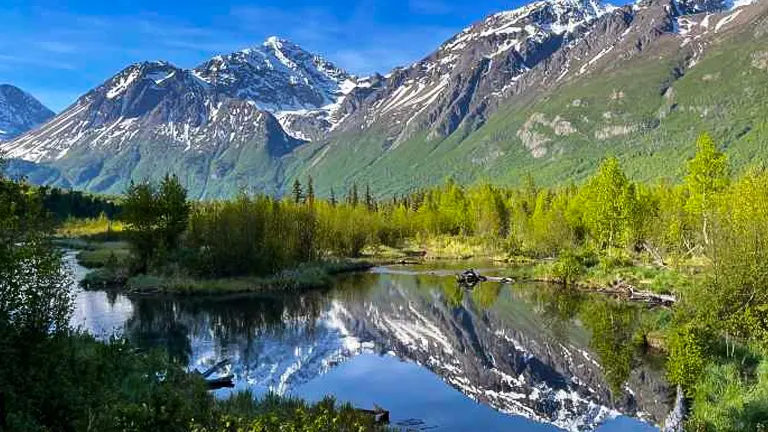
Chugach’s diverse wildlife is a testament to its ecological significance, serving as a haven for moose, elusive bears, and iconic Dall sheep, each species adapted to specific park environments. The park also plays a vital role in avian ecology, acting as a crucial migratory waypoint for various bird species. This rich biodiversity not only offers a sanctuary for wildlife but also turns the park into a living classroom for environmental education, emphasizing the importance of conservation and offering visitors a profound, immersive experience into Alaska’s unique natural heritage.
Unique Location of Chugach State Park
Chugach State Park boasts a unique location that sets it apart from other natural reserves. Situated in Southcentral Alaska, primarily within the Municipality of Anchorage, the park’s westernmost boundary is merely seven miles east of downtown Anchorage. This proximity to Alaska’s largest city offers an exceptional blend of wilderness access and urban convenience. Enveloping about 495,000 acres of land, Chugach is not only one of the largest state parks in the United States but also a place of diverse landforms and rugged topography.
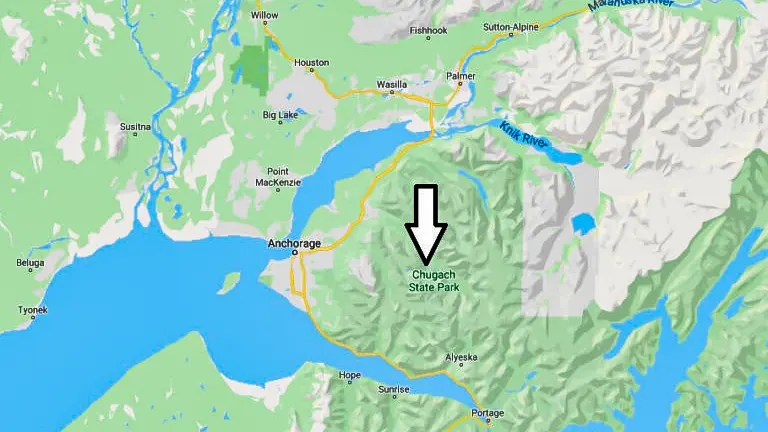
Bounded by the Alaska Range to the north and west and the Chugach and Wrangell Mountains to the east, it presents a striking contrast to the nearby urban landscape. The park’s location includes extensive ocean shoreline, abundant lakes, and massive glaciers and ice fields, providing easy access to a variety of natural wonders. Within minutes, visitors can transition from the bustling city life of Anchorage to the serene natural beauty of Eklutna Lake, Flattop Mountain, and countless other wilderness experiences that Chugach State Park offers.
The Importance of Conservation and Recreation in Chugach State Park
Chugach State Park, encompassing a vast area near Anchorage, Alaska, is a critical region for conservation and recreation. Its establishment in 1970 was a significant move to preserve the Chugach Mountains’ scenic beauty and protect Anchorage’s water supply, highlighting the park’s importance in ecological conservation. Serving as a habitat for diverse wildlife including moose, bears, and Dall sheep, the park plays a key role in sustaining biodiversity and maintaining ecological balance.
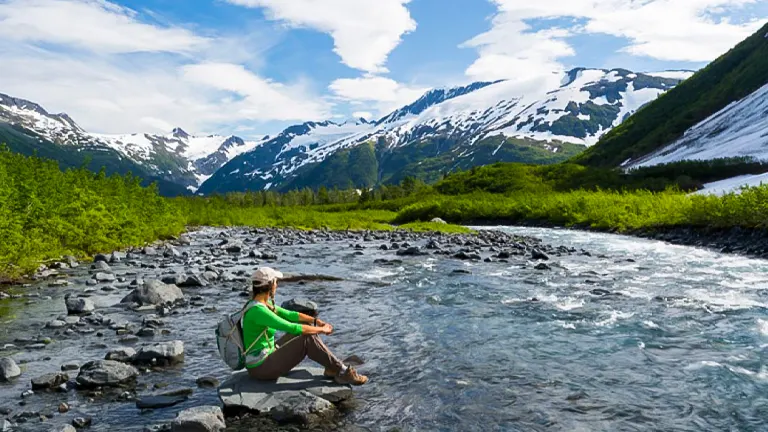
Simultaneously, Chugach offers a plethora of recreational opportunities, with over 280 miles of trails catering to hikers, bikers, and winter sports enthusiasts. This balance of preservation and recreation fosters environmental stewardship and awareness among visitors, while providing a natural retreat for physical and mental well-being. The park’s proximity to Anchorage enhances its value as an accessible natural haven, making it a vital resource for both local communities and tourists seeking to connect with Alaska’s unique wilderness.
Diverse Vegetation and Plant Species in Chugach State Park
- White Spruce (Picea glauca): Dominating the lower forested areas of the park, the White Spruce is a cornerstone of Chugach’s ecosystem. These trees are essential for providing habitat and food for various wildlife species.
- Paper Birch (Betula papyrifera): Known for its distinctive white bark, the Paper Birch is a common sight in the park’s mixed-forest areas. It adds to the autumnal beauty with its yellow leaves and supports a variety of wildlife.
- Alpine Forget-Me-Not (Myosotis alpestris): As the state flower of Alaska, this delicate blue flower thrives in the rocky, higher altitudes of Chugach, symbolizing the resilience of life in harsh alpine environments.
- Sitka Alder (Alnus viridis sinuata): Commonly found in disturbed areas and along riverbanks, Sitka Alder plays a crucial role in soil stabilization and nitrogen fixation, contributing to the park’s ecological diversity.
- Devil’s Club (Oplopanax horridus): A unique plant to the region, Devil’s Club is recognized by its large leaves and spiky stems. It holds cultural significance for indigenous peoples and is a vital part of the park’s understory.
- Wild Rhubarb (Polygonum alaskanum): Found in open, rocky areas, Wild Rhubarb is notable for its large, broad leaves and is a key species in the park’s subalpine zones, adding to the plant diversity.
- Mountain Avens (Dryas octopetala): Thriving in the higher, exposed ridges of Chugach, Mountain Avens are small, resilient plants that are a part of the park’s diverse tundra landscape.
- Crowberry (Empetrum nigrum): This low-lying evergreen shrub produces edible black berries and is a staple in the diets of many local bird species, contributing to the park’s ecological food web.
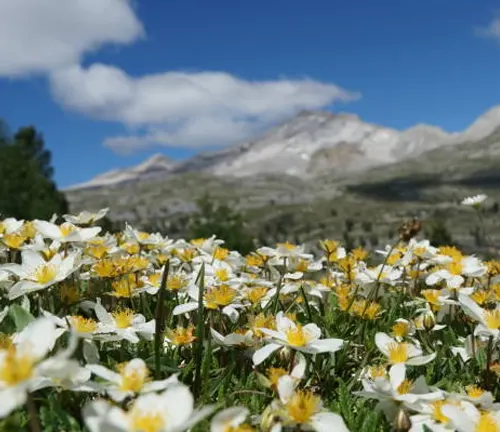
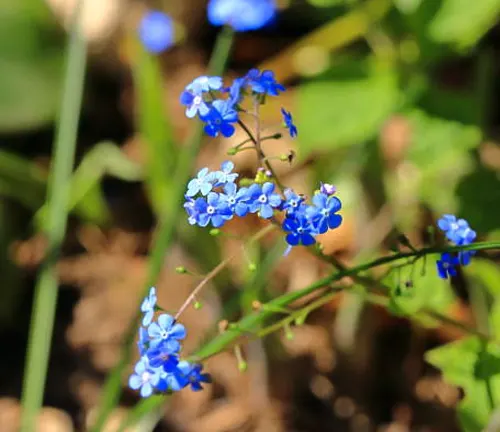
Fauna in Chugach State Park
- Moose (Alces alces): The moose, Alaska’s largest herbivore, is a common sight in the park. They are often found in the park’s wetlands and forests, contributing to the ecosystem by shaping vegetative growth.
- Brown Bear (Ursus arctos) and Black Bear (Ursus americanus): These iconic symbols of Alaskan wildlife roam the park’s vast terrain. Brown bears are typically found in higher elevation areas and near salmon streams, while black bears are more common in forested areas.
- Dall Sheep (Ovis dalli): Native to the region, Dall sheep are easily recognized by their magnificent curled horns. They predominantly inhabit the rocky mountain ranges of the park, playing a role in the alpine ecosystem.
- Bald Eagle (Haliaeetus leucocephalus): As a national symbol of the United States, the bald eagle is a majestic sight in Chugach. These birds are often seen along the coast and rivers, where they fish and scavenge.
- Hoary Marmot (Marmota caligata): Known for their loud whistles, hoary marmots live in alpine meadows and rocky areas. They are a key species in the park’s ecosystem, serving as prey for predators and contributing to soil aeration.
- River Otter (Lontra canadensis): These playful mammals are found along the park’s waterways, where they hunt for fish. River otters are important indicators of water quality and health of aquatic ecosystems.
- Lynx (Lynx canadensis): The elusive Canadian lynx, with its distinctive tufted ears, is a rare but fascinating sight. Primarily nocturnal, lynxes are solitary animals, adapted to the park’s snowy environment.
- Snowshoe Hare (Lepus americanus): Snowshoe hares are vital to the park’s food web, serving as prey for many carnivores. They are known for their large hind feet and seasonal color change from brown to white.
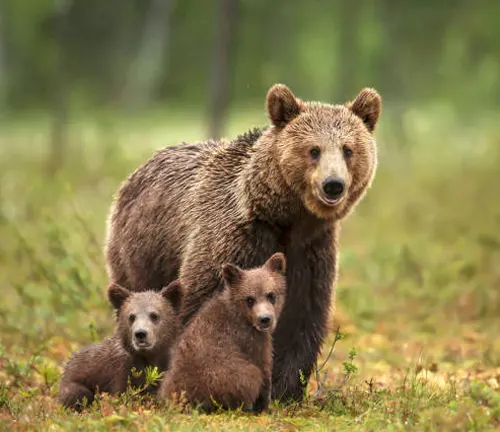
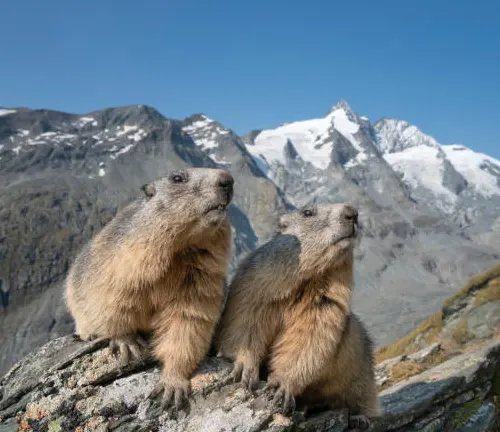
Attractions in Chugach State Park
Flattop Mountain: Flattop Mountain, the most climbed mountain in Alaska, is a premier attraction in Chugach State Park. Offering panoramic views of Anchorage and the surrounding area, it’s a favorite for both locals and tourists. The hike to the summit is accessible yet challenging, making it a rewarding experience for a wide range of hikers.
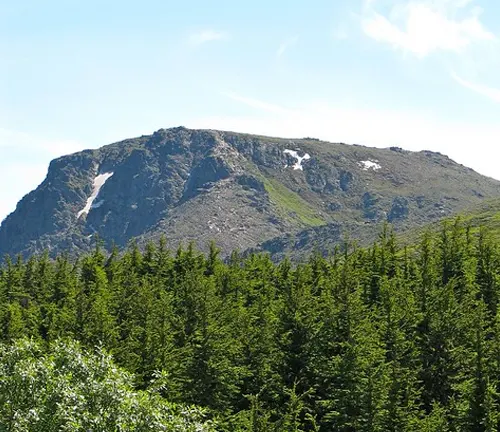
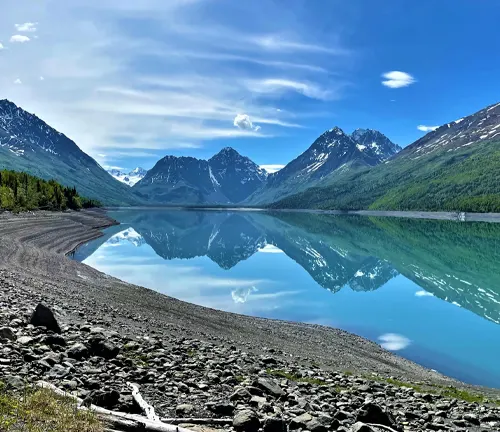
Eklutna Lake: Eklutna Lake is a stunningly beautiful and serene destination within the park. Known for its vivid blue waters and scenic surroundings, it provides opportunities for kayaking, biking, and hiking. The lake area also features campgrounds and picnic spots, making it perfect for day trips and camping.
Eagle River Nature Center: This facility serves as an educational gateway to the park’s wildlife and ecosystems. Offering interpretive programs and guided walks, it’s an excellent starting point for exploring the surrounding trails and observing local flora and fauna.
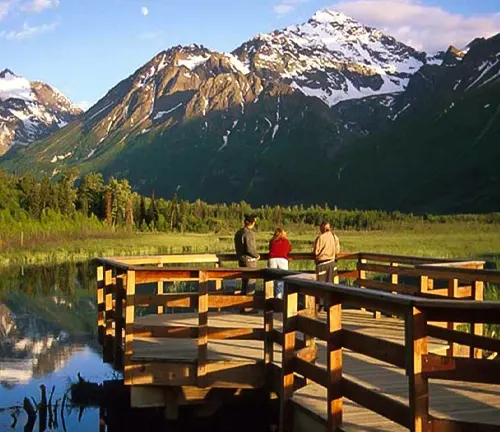

Crow Pass Trail: Part of the historic Iditarod Trail, the Crow Pass Trail is renowned for its incredible vistas, wildlife viewing opportunities, and varied landscapes. This trail offers a more challenging hike and traverses diverse terrains, including glacial valleys and river crossings.
Thunderbird Falls: A relatively easy and family-friendly hike leads to Thunderbird Falls, a spectacular 200-foot waterfall. The trail offers a mix of forested areas and viewpoints, making it a popular spot for a leisurely hike and photo opportunities.
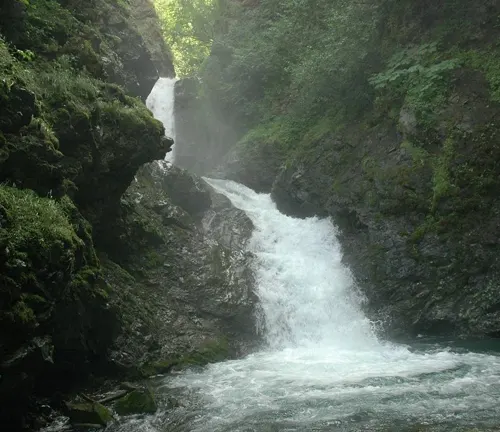
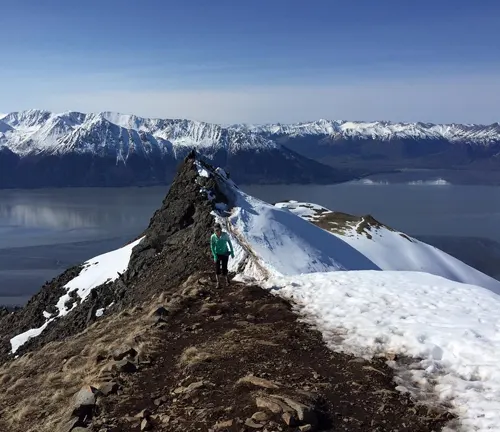
Bird Ridge Trail: Offering a steep and strenuous hike, Bird Ridge Trail is well-known for its breathtaking views of Turnagain Arm, the Chugach Mountains, and surrounding areas. This trail is especially popular during summer for its wildflowers and wildlife.
Recreational Activities in Chugach State Park
- Hiking and Nature Walks: Chugach State Park, with its expansive network of trails, is a paradise for hikers. Ranging from easy nature walks to challenging mountain hikes, the park caters to all levels of experience. Trails like the Powerline Pass and Winner Creek offer breathtaking views and diverse landscapes, from dense forests to alpine tundras, allowing hikers to immerse themselves in Alaska’s natural beauty.
- Wildlife Viewing and Bird Watching: The park’s diverse habitats are home to an array of wildlife, making it an excellent spot for wildlife viewing and bird watching. Visitors can spot moose, brown bears, and Dall sheep in their natural environment. Bird enthusiasts can enjoy sightings of bald eagles and a variety of migratory birds, particularly near water bodies and open fields.
- Mountain Biking: For those seeking an adrenaline rush, Chugach State Park offers mountain biking trails with varying degrees of difficulty. Trails such as the Kincaid Park Trails provide both challenging terrains for experienced bikers and gentler routes for beginners, all within the scenic backdrop of Alaska’s wilderness.
- Winter Sports: In winter, the park transforms into a snowy haven for winter sports enthusiasts. Activities such as cross-country skiing, snowshoeing, and dog sledding are popular. Trails like the Hillside Trails and Beach Lake Trails offer well-maintained routes for these winter activities, showcasing the park’s winter beauty.
- Fishing and Kayaking: The park’s lakes and streams, particularly Eklutna Lake and Eagle River, provide excellent opportunities for fishing and kayaking. Anglers can enjoy catching trout and salmon, while kayaking offers a peaceful way to explore the park’s aquatic environments amidst stunning natural scenery.
- Camping and Picnicking: Chugach State Park is a favorite for campers and picnickers. With facilities like the Eagle River Campground and Bird Creek Campground, visitors can enjoy camping amidst the serenity of nature. Picnic spots scattered throughout the park offer ideal settings for a family day out.
- Photography and Nature Observation: The park’s stunning landscapes, diverse wildlife, and ever-changing seasons make it a haven for photographers and nature observers. From capturing the Northern Lights to photographing the diverse flora and fauna, Chugach offers countless opportunities for both amateur and professional photographers.
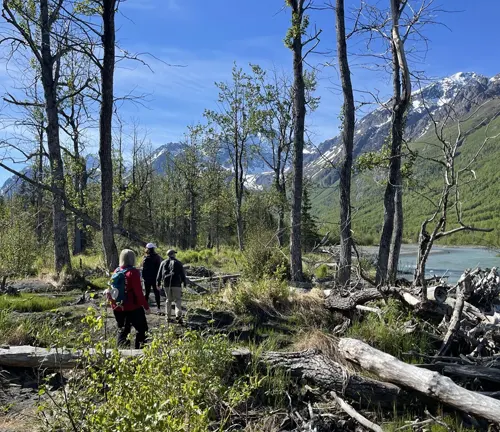

Different Facilities and Amenities in Chugach State Park
- Campgrounds: Chugach State Park offers a variety of camping options, accommodating both tent campers and RV enthusiasts. Notable campgrounds like Eklutna Lake and Eagle River provide well-maintained sites with basic amenities like fire pits, picnic tables, and restroom facilities. These campgrounds are ideal for those looking to immerse themselves in the park’s natural beauty while enjoying the comforts of a well-equipped camping site.
- Public Use Cabins: For a more secluded and rustic experience, the park features several public use cabins. These cabins, such as those at Eklutna Lake, offer a unique wilderness lodging experience. Equipped with basic amenities, they provide a perfect retreat for visitors seeking a more intimate connection with nature.
- Trails and Boardwalks: The park boasts an extensive network of trails and boardwalks, catering to hikers, bikers, and nature observers of all skill levels. From the scenic boardwalks near Eagle River Nature Center to the challenging trails leading up Flattop Mountain, these pathways provide safe and accessible means to explore the park’s diverse landscapes.
- Picnic Areas: Scattered throughout the park, numerous picnic areas offer visitors spots to relax and enjoy meals amidst picturesque surroundings. These areas, often equipped with tables and grills, are perfect for family outings and group gatherings.
- Visitor Centers and Educational Displays: The park’s visitor centers, such as the Eagle River Nature Center, serve as informational hubs. They offer educational displays, maps, and resources about the park’s ecology, history, and trails. These centers are staffed by knowledgeable personnel who can provide guidance and answer questions.
- Wildlife Viewing Platforms: Specifically designed wildlife viewing platforms and observation areas are situated in strategic locations throughout the park. These platforms provide safe and unobtrusive spots for watching wildlife, such as moose or bears, in their natural habitat.
- Recreational Equipment Rentals: Certain areas within the park offer rental services for recreational equipment like kayaks, mountain bikes, and skis. This service enables visitors to fully engage in the park’s recreational opportunities without the need to bring their own equipment.
Tips and Advice for Visiting Chugach State Park
- Prepare for the Weather: The weather in Chugach State Park can be unpredictable, so it’s essential to dress in layers and be prepared for sudden changes. Waterproof and windproof clothing is recommended, especially when venturing into higher elevations or during the colder months.
- Wildlife Safety: Given the abundance of wildlife, including bears and moose, visitors should familiarize themselves with appropriate safety measures. This includes keeping a safe distance from animals, making noise while hiking to avoid surprising wildlife, and knowing how to use bear spray.
- Trail Etiquette: Respect the park’s trails by staying on marked paths to protect the natural vegetation and prevent erosion. Yield to uphill hikers and be mindful of right-of-way rules when encountering cyclists or equestrians.
- Leave No Trace Principles: Embrace the ‘Leave No Trace’ principles to minimize your impact on the environment. This includes packing out all trash, avoiding feeding wildlife, and leaving natural and cultural artifacts undisturbed.
- Check Park Regulations and Permits: Some activities in the park, like fishing and hunting, require permits. It’s important to check the latest park regulations and obtain necessary permits prior to your visit.
- Plan Your Visit: Given the park’s vast size, it’s a good idea to plan your visit in advance. Decide which areas of the park you want to explore, and consider the time needed to travel between different locations within the park.
- Camping Preparedness: If you plan to camp, ensure you have all the necessary gear, including a durable tent, sleeping bag suitable for the climate, and a bear-proof food container.
- Stay Informed: Keep yourself updated on the park’s conditions and any potential wildlife sightings or trail closures by checking the park’s website or contacting the visitor centers.
Recommendation
I highly recommend a visit to Chugach State Park, a splendid fusion of natural wonders and cultural richness. Known for its diverse ecosystems, iconic landscapes, and a myriad of recreational opportunities, the park promises an engaging and profound experience. Engage in serene outdoor pursuits like hiking and wildlife watching, actively participating in the park’s conservation initiatives. The scenic trails, significant landmarks, and dedicated efforts in preserving nature make Chugach State Park an essential destination for anyone seeking a perfect blend of natural exploration and leisurely activities.
Conclusion
In conclusion, Chugach State Park stands as a magnificent beacon of Alaska’s natural beauty and outdoor adventure. Its vast landscapes, ranging from rugged mountains to serene lakes, offer a unique escape into nature, just a stone’s throw from the urban life of Anchorage. The park’s diverse ecosystems and wildlife provide invaluable opportunities for environmental education and conservation, while its extensive network of trails and recreational activities cater to all levels of outdoor enthusiasts. Chugach is more than just a park; it’s a gateway to experiencing the untouched wilderness of Alaska, a place where adventure and tranquility coexist harmoniously. Whether seeking solace in nature’s embrace or the thrill of outdoor exploration, Chugach State Park promises an unforgettable experience that resonates long after the visit.
FAQs
- What is the best time of year to visit Chugach State Park?
The ideal time to visit is during the summer months, from June to August, when the weather is milder and trails are most accessible. Winter visits, from November to March, offer beautiful snowscapes and winter sports opportunities. - Are there any fees to enter Chugach State Park?
There are no entrance fees to enter Chugach State Park. However, some facilities like campgrounds and public use cabins may require a fee. - Can I see the Northern Lights from the park?
Yes, Chugach State Park is a great location for Northern Lights viewing, especially during the winter months when the nights are longer and darker. - Is Chugach State Park family-friendly?
Absolutely! The park offers various trails and activities suitable for families, including easy hikes, wildlife viewing, and picnic areas. - Are pets allowed in the park?
Yes, pets are allowed but must be kept on a leash at all times to ensure the safety of wildlife and other visitors. - What kind of wildlife might I see in the park?
Visitors might see moose, bears, Dall sheep, bald eagles, and a variety of other wildlife. Always view wildlife from a safe distance. - Can I camp anywhere in the park?
Camping is allowed in designated campgrounds and certain backcountry areas. It’s important to follow park guidelines to protect the environment and wildlife. - Are guided tours available in Chugach State Park?
Yes, various local tour operators offer guided hiking, wildlife viewing, and photography tours in the park.
As our journey through the breathtaking Chugach State Park comes to a close, we leave with memories of its stunning landscapes and the spirit of adventure it instills. This Alaskan gem, with its blend of natural beauty and accessible wilderness, continues to captivate the hearts of all who visit. Until next time, Chugach State Park remains a cherished destination, eagerly awaiting our return to its majestic mountains and tranquil lakes.



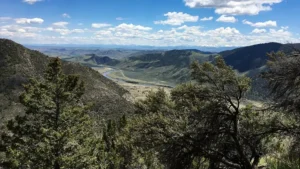

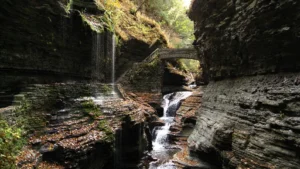
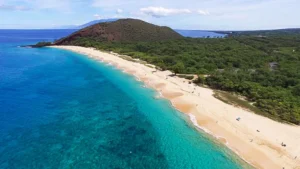
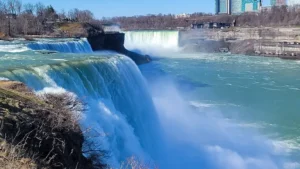

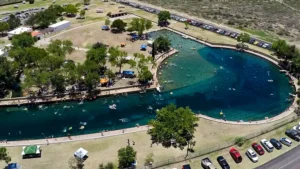

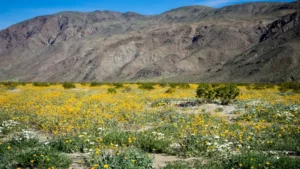

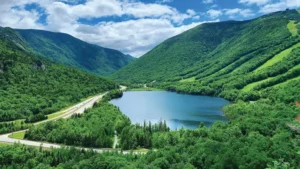
Leave your comment